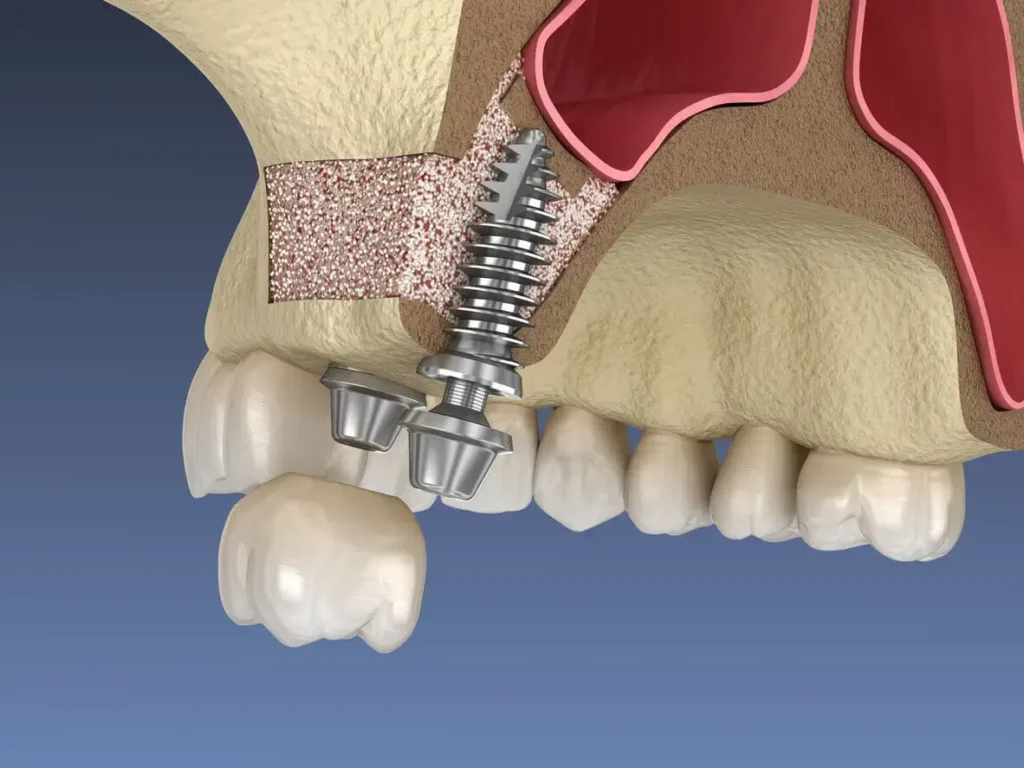Introduction:
Sinus lift surgery, also known as sinus augmentation, is a dental procedure designed to increase the amount of bone in the upper jaw, particularly in the area of the molars and premolars. This surgical technique has become increasingly popular in the field of dentistry to address issues related to insufficient bone height in the posterior maxilla, enabling the successful placement of dental implants. In this article, we will explore the various aspects of sinus lift surgery, including its indications, procedure, recovery, and potential risks.
Indications for Sinus Lift Surgery:
Sinus lift surgery is typically recommended for individuals who have experienced bone loss in the upper jaw due to factors such as:
- Tooth Loss: When teeth in the posterior maxilla are lost, the surrounding bone can gradually resorb, leading to a reduction in bone height.
- Periodontal Disease: Advanced gum disease can contribute to bone loss in the jaw, affecting the stability of neighboring teeth.
- Trauma: Facial trauma or injuries to the upper jaw can result in bone loss, necessitating the need for sinus lift surgery.
- Natural Anatomical Variations: Some individuals naturally have a sinus cavity that extends into the upper jaw, leaving minimal space for implant placement.

Procedure:
Sinus lift surgery is typically performed by oral and maxillofacial surgeons or periodontists. The procedure involves the following key steps:
- Diagnostic Imaging: Before the surgery, the dentist will conduct thorough examinations using X-rays or CT scans to assess the current bone density and identify the location of the sinus cavity.
- Anesthesia: Sinus lift surgery is performed under local or general anesthesia to ensure the patient’s comfort and minimize pain during the procedure.
- Incision: A small incision is made in the gum tissue to expose the underlying bone.
- Lifting the Sinus Membrane: The dentist carefully lifts the sinus membrane away from the upper jaw, creating a space between the membrane and the bone.
- Bone Graft: A bone graft material, often sourced from the patient’s own body or a donor, is then placed in the space created above the sinus. This graft material stimulates new bone growth over time.
- Suture Closure: The incision is closed with sutures, and the healing process begins.
Recovery:
After sinus lift surgery, patients are advised to follow post-operative care instructions provided by their dentist. This may include:
- Pain Management: Over-the-counter or prescription pain medications may be recommended to manage any discomfort.
- Avoidance of Certain Activities: Patients are typically advised to avoid strenuous activities, smoking, and blowing their nose forcefully during the initial recovery period.
- Follow-up Appointments: Regular follow-up appointments allow the dentist to monitor the healing process and address any concerns.
Potential Risks:
While sinus lift surgery is generally considered safe, there are potential risks and complications, including:
- Infection: As with any surgical procedure, there is a risk of infection at the incision site.
- Sinus Membrane Perforation: Accidental tearing of the sinus membrane may occur during the surgery, but this is usually addressed by the surgeon immediately.
- Graft Failure: In some cases, the bone graft may not integrate successfully, requiring additional procedures.
Conclusion:
Sinus lift surgery has proven to be a valuable and effective technique for enhancing bone volume in the upper jaw, allowing for the successful placement of dental implants. With advancements in dental technology and surgical techniques, sinus lift procedures continue to provide patients with improved oral health and the opportunity to enjoy the benefits of dental implants in cases where they may have otherwise been challenging. If you are considering sinus lift surgery, it is crucial to consult with a qualified dental professional to determine the most appropriate treatment plan for your specific needs.

